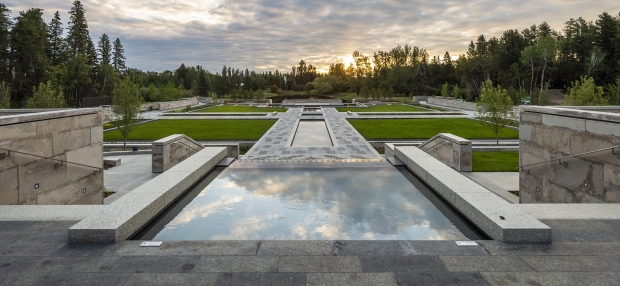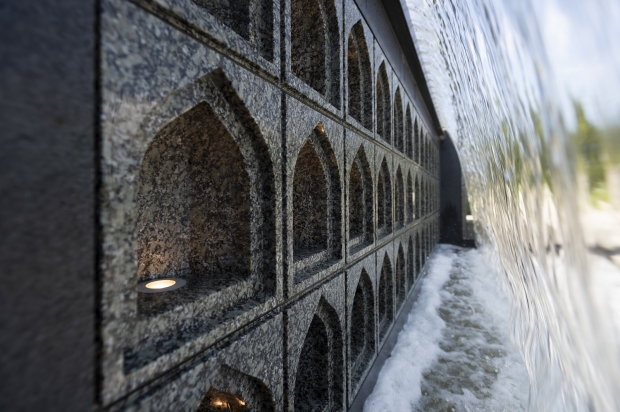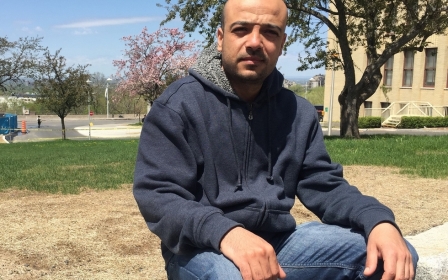World's northernmost Islamic garden opens in Canada

MONTREAL, Canada - How do you make thousands of years of rich traditions relevant to people today?
That was the task put before a group of architects, horticulturalists and designers, as it set out to build what would become a 12-acre Islamic garden housed in a most unexpected place.
The Aga Khan Garden was built on the grounds of the University of Alberta Botanic Garden, southwest of Edmonton in western Canada, after several years of planning and 18 months of construction.
Friday marks the first time the public can visit the northernmost Islamic garden in the world.
Organisers of the project say they hope the garden will promote tolerance and spark interest in Islam.
“It became an exercise of taking the inspirational geometries of Islamic garden history and adapting those” to the site, said Thomas Woltz, owner of Nelson Byrd Woltz Landscape Architects.
I think North America could benefit from a deeper understanding of these traditions, to get us toward a more tolerant and educated society.
-Thomas Woltz
The main architect behind the project told Middle East Eye that he spent a year researching the history of Islamic gardens – from the use of symmetry and water to frequently used plants – and visited several gardens in Egypt and India for inspiration.
“Through these travels and research, I saw how adaptable the fundamental geometries and elements of Islamic gardens were to different cultures and ecologies around the world,” Woltz said.
“It started to feel like an analogy to the Muslim Diaspora – of incredible resilience and adaptability to different parts of the world.”
Features of Islamic garden
The garden’s aesthetic was inspired by the Mughal Empire that ruled most of what is now India and Pakistan in the 15th century.
That was a choice of the Aga Khan himself, the leader of the Ismaili Muslim community, Woltz explained.
The project was financed by a $25m donation from the Aga Khan, and developed by the Aga Khan Trust for Culture after an agreement was reached between the University of Alberta and the Aga Khan University.
However, the climate conditions in Edmonton – a city known as the “Gateway to the North” where it can go from 30 degrees in the summer to minus 30 degrees in the winter – make the Aga Khan Garden different from traditional Islamic gardens.
For one thing, you won’t find pomegranate trees, olive trees, or date palms in the garden amid the harsh Canadian climate.
“Several people said, ‘Oh, well it snows in Kashmir.’ Yes, it snows in Kashmir and it’s freezing a few nights of the year, whereas in Alberta, it can get to 48 degrees below zero for three months,” he said, with a laugh.
“That’s a very different survivability.”
The staff at the botanic garden recommended several types of plants that can survive the temperatures.
The architects cross-referenced the list against Islamic poetry and plant lists from Islamic gardens in history and came up with an array of “quite beautiful” greenery, Woltz said.
He credited a large team – architects, agriculture experts at the University of Alberta, Islamic history scholars and members of the Aga Khan Trust for Culture – with bringing the project to fruition.
An appeal to the senses
Following a preferred route, visitors enter the garden by a simple stone wall and walk through a woodland bog that aims to prepare “the mind and the body for what it’s going to see”, Woltz said.
They then come upon a dark, elliptical stone with fresh water on top of it, to create “a mirror to the sky”. The garden includes ancient throne-like structures (known as talar), canals of water and an amphitheatre to host events.
Fruit orchards stretch out around a pond, and there’s also a waterfall and granite and limestone terraces.
The garden is home to more than 25,000 different types of plant life, including trees, shrubs, perennials, annuals and wetland plants.
“It’s just so positioned that almost all of our other thematic gardens … are like petals on a flower that radiate from this centre,” he told MEE.
Foote said the garden seeks to appeal to visitors’ many senses through “the sound of running water, the smell of flowers [and] the taste of ripe fruit”.
Even the construction of sunken plant beds are equipped with misters to “let the odours and the floral scent come up to you and bathe you in scent”.
'Eye-opener'
Foote said he hopes the Aga Khan Garden will help draw more visitors to the area, and give them a chance to discover the richness of Islamic gardens, maybe for the first time.
About 20,000 primary and high school students already visit the botanic gardens every year, he explained, and giving them the chance to experience new cultures maybe helping them become “a little more accepting and interested in things from elsewhere”.
“It’s an eye-opener,” he said.
Woltz agreed, saying he wished visitors to the garden would gain “a deeper understanding of the magnificent culture of Islam that has shaped so much of our world”.
“My hope is that through seeing this garden we take a step toward tolerance and understanding of cultures other than those that might be more familiar in that part of the world,” he said.
“I think North America could benefit from a deeper understanding of these traditions, to get us toward a more tolerant and educated society.”
New MEE newsletter: Jerusalem Dispatch
Sign up to get the latest insights and analysis on Israel-Palestine, alongside Turkey Unpacked and other MEE newsletters
Middle East Eye delivers independent and unrivalled coverage and analysis of the Middle East, North Africa and beyond. To learn more about republishing this content and the associated fees, please fill out this form. More about MEE can be found here.






